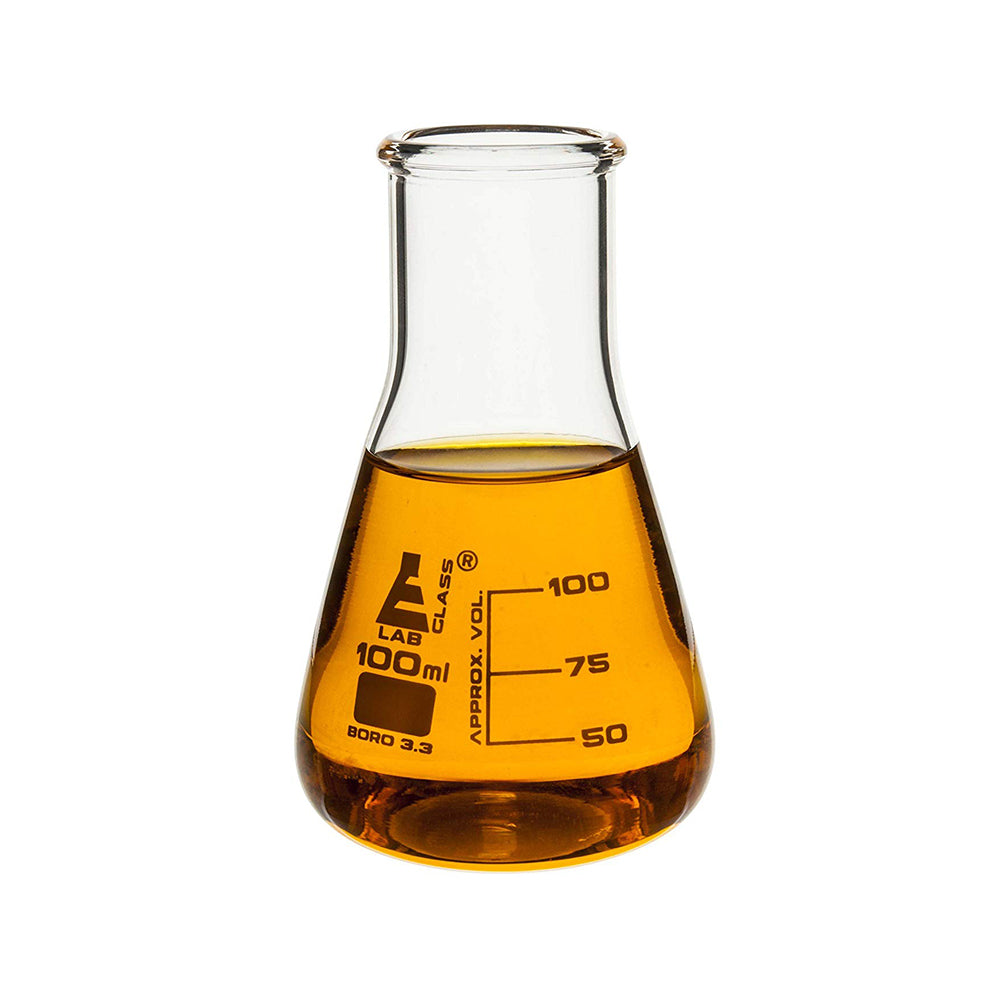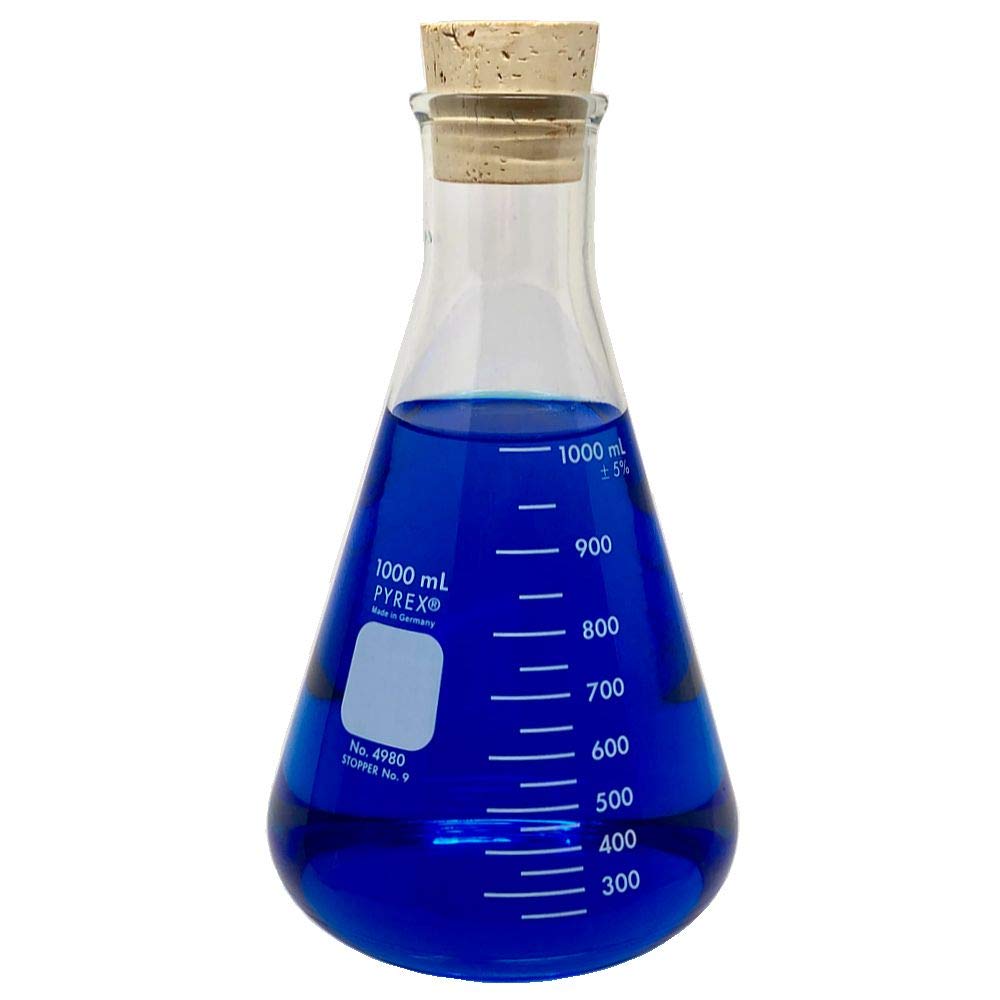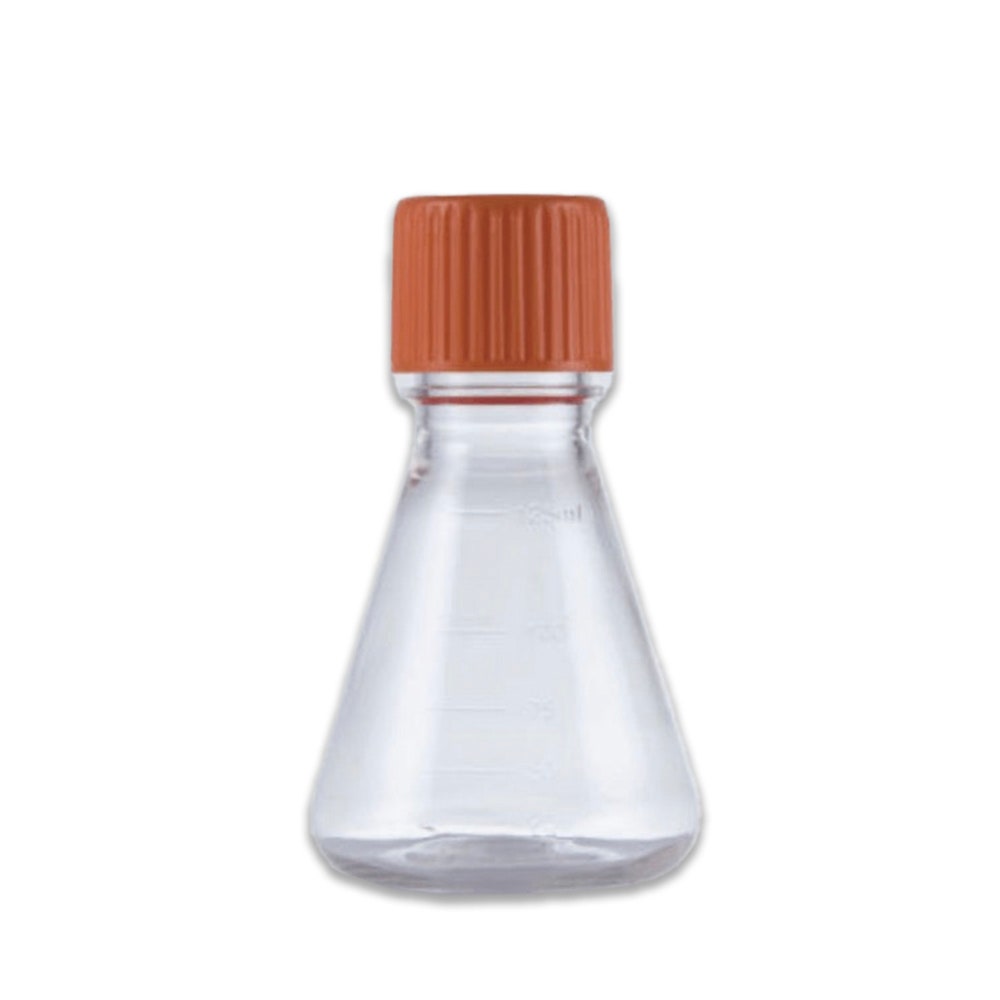Introduction to Flasks in a Chemistry Laboratory
Flasks are vital tools in a chemistry lab. They come in diverse types, each with a unique purpose. Recognizing the right flask for a task is key for accuracy and safety. This guide will explain the differences between Erlenmeyer flask vs Volumetric flask. We will look at their designs, uses, and how they meet various needs in a laboratory setting.
An Erlenmeyer flask offers a conical shape with a wide base and narrow neck. It serves well for mixing, heating, and storing liquids. On the other hand, a volumetric flask boasts precision. Its long neck and flat bottom make it perfect for precise measurements.
Understanding these flasks helps make the right choice for lab procedures. It ensures that experiments are efficient and results are reliable. In the following sections, we explore the specifics of each flask type. Stay tuned for a detailed lab comparison.

The Erlenmeyer Flask: Design and Uses
Erlenmeyer flasks are essential in many lab processes. They are versatile and serve multiple purposes in various scientific settings.
Common Uses of Erlenmeyer Flask
Erlenmeyer flasks are ideal for mixing chemicals due to their conical shape. This shape helps prevent spillage during the mixing process. They also serve well for heating, cooling, and storing liquids. Schools and research labs frequently use these flasks in their experiments.
Design Features of Erlenmeyer Flask
The Erlenmeyer flask features a broad, flat base that provides stability and a tapered body that narrows into a cylindrical neck. This design not only aids in mixing solutions by swirling but also minimizes the risk of spillage. The narrow neck helps reduce evaporation and contamination. Made from glass or plastic, these flasks can withstand temperature changes and chemical reactions. Most Erlenmeyer flasks come with markings to measure volumes, but they are not recommended for precise measurements.
The Volumetric Flask: Design and Precision
Volumetric flasks play a crucial role in laboratories. They offer precise measurements which are vital for scientific accuracy.
Unique Characteristics of Volumetric Flask
Volumetric flasks are known for their long neck and flat bottom. This design helps in measuring liquids accurately. They often feature a single graduation mark. This mark denotes the volume the flask holds when filled to that point. These flasks ensure high precision which is essential for quantitative tasks.
Role in Measurement and Analysis
In labs, volumetric flasks are indispensable for making solutions. They are ideal for dilutions and preparing standard solutions. Analytical chemistry relies heavily on these flasks for precise volume measurements. The accuracy of volumetric flasks impacts the reliability of experimental results.
Comparing Erlenmeyer and Volumetric Flasks
When deciding between Erlenmeyer flasks and volumetric flasks, it’s important to understand their distinct designs and applications. These differences impact their roles in laboratory procedures.
Shape and Structure Differences
Erlenmeyer flasks have a conical shape, which widens at the base. This design allows for easy mixing by swirling, reducing spill risks. Their narrow necks help prevent evaporation and contamination. Volumetric flasks, with a long neck and flat bottom, are for precise measurements. They have a single, marked graduation, showing their exact volume capacity. This feature makes them highly accurate for preparing solutions.
Specific Applications for Each Flask Type
Erlenmeyer flasks serve well in processes that involve mixing and heating. They are often used for titrations due to their shape, promoting easy swirling of contents without spills. Volumetric flasks are essential for analytical tasks where precise volumes are necessary. They are the go-to choice for preparing standard solutions in quantitative analysis. The choice between an erlenmeyer flask and a volumetric flask hinges on the task’s demand for accuracy or functionality.

Handling and Reading Flasks Properly
Proper handling and reading of flasks in a laboratory setting is crucial for accurate results.
Guide to Using Erlenmeyer Flasks
When using Erlenmeyer flasks, always grasp the neck firmly. Pour liquids slowly to avoid spills. Swirl the flask gently for mixing; don’t shake. Check the volume markings for approximate measurements and use these cautiously. They are not meant for precision.
Before applying heat, make sure the flask is heat-resistant. After heating, handle with care, using tongs or heat gloves. Always cap or stopper the flask snugly for storage to prevent contamination. Clean flasks thoroughly after use to avoid cross-contamination in future experiments.
Best Practices for Volumetric Flask Measurements
Utilize volumetric flasks for precise volume measurements. Fill slowly, and align the meniscus with the calibration mark for accuracy. Avoid parallax error by positioning your eye level with the meniscus. Use pipettes or burettes for transferring liquids into or out of the flask for optimal precision.
Always use volumetric flasks at the temperature they were calibrated. Be aware that temperature changes can affect volume reading. Do not mix solutions in these flasks — they are for measurement only. Rinse the flask with the solution it’s meant to hold beforehand to maintain concentration integrity.
For both flask types, maintaining cleanliness and handling with care are key to consistent performance and trustworthy results.
Material and Quality Standards for Laboratory Flasks
When selecting laboratory flasks, material and quality are crucial. They determine the flasks’ durability and ability to withstand harsh conditions. Let’s delve into how standards and materials impact flask quality.
Impact of ASTM Standards on Flask Quality
ASTM standards play a significant role in lab flask quality. They ensure flasks meet safety and performance criteria. Manufacturers adhere to these benchmarks to offer reliable and consistent products. Laboratories rely on ASTM compliance for trustworthy experiments. Hence, ASTM-certified products often stand out as premium choices.
Materials like borosilicate glass set high quality standards. Glass flasks endure heat and chemical exposure well. Glass is preferred for its clear visibility and resistance to scratches and chemicals. Plastic flasks, while durable and lightweight, may not resist heat as glass does. They can suit certain tasks better, depending on the lab’s needs.
Borosilicate Glass vs Plastic Flasks
Borosilicate glass flasks take the lead for heat resistance. They handle thermal shocks and high temperatures without cracking. This property is vital for heating, boiling, and sterilization processes. Plastic flasks offer a shatterproof advantage. They are a safe option for lower-risk and routine tasks.
Choosing between glass and plastic comes down to the lab’s requirements. Glass is superior for intense chemical and heat applications. Plastic is practical for everyday use and educational settings. Both materials have their own merits. Labs should consider their specific activities to select the right flasks.

Variations and Specialized Types of Erlenmeyer Flasks
Erlenmeyer flasks come in many forms to suit a vast range of lab tasks. Knowing the different types helps you choose the right one for your specific activity. These flasks vary in size, material, and extra features like caps or special coatings.
Types of Erlenmeyer Flasks Available in the Market
You can find Erlenmeyer flasks made of plastic or glass, each offering unique benefits. Glass flasks resist heat and chemicals well, making them ideal for intense lab work. Plastic flasks are lighter and won’t shatter easily, which is great for safer, everyday use.
There are also various sizes available, from small flasks for minor experiments to large ones for bigger volumes. Some have screw caps to securely store or mix contents. Markings on the side give approximate volumes, though they’re not for precise measurements.
Specialized Erlenmeyer Flask Designs for Specific Tasks
Certain tasks call for specialized Erlenmeyer flasks. For example, some flasks come with wide mouths for easy addition and removal of materials. Others have narrow necks that reduce evaporation during heating. There are also flasks designed for shaking cultures, with features that allow for proper mixing without spills.
Flasks with special coatings protect sensitive solutions from light. These are essential when you’re working with light-sensitive chemicals. Some Erlenmeyer flasks are treated to endure repetitive sterilization, which is key for tasks that require high levels of cleanliness.
In summary, Erlenmeyer flasks are not ‘one-size-fits-all.’ Each type serves a distinct purpose in the lab. When selecting a flask, consider the task at hand to ensure you get the ideal type for your lab’s needs.
Conclusion: Choosing the Right Flask for Your Laboratory Needs
Choosing the right flask makes a big difference in lab work. For precision, a volumetric flask is best. Its exact volume marking is key for accurate measurements. This flask is ideal for creating solutions and performing quantitative analysis.
For mixing and general use, an Erlenmeyer flask works well. Its shape helps with swirling and reduces spill risks. This flask is versatile, good for mixing, and heating chemicals.
ASTM standards are important for flask quality. They make sure flasks are safe and work well. Glass flasks, like those made of borosilicate, handle heat and chemicals. They are great for tough lab conditions. Plastic flasks are strong and light. They are good for everyday tasks and are safer for students.
Different Erlenmeyer flasks fit different jobs. Some have special features, like wider mouths or coatings for light protection. Think about your lab needs before choosing a flask.
In conclusion, each flask type has a purpose. Volumetric flasks give precision, Erlenmeyer flasks offer versatility. Quality materials and standards ensure good performance. Consider your lab’s activities to pick the right one.
